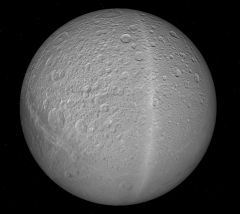Difference between revisions of "136472 Makemake"
Jump to navigation
Jump to search
(→Gallery: changed background colors instead.) |
m (Arvil moved page User:Arvil/Sandbox02 to 136472 Makemake: Move to article page.) |
(No difference)
| |
Revision as of 11:51, 30 October 2024
| 136472 Makemake | |
|---|---|

| |
| 136472 Makemake from Makemake.zip in Orbiter 2006P1 | |
| Designation | |
| Name | 136472 Makemake |
| Reference body | Sun |
| Planetary mean orbits | |
| Epoch | 2005.67 (J2005.67) |
| Semimajor axis (a) | 6846000000000 m |
| Eccentricity (e) | 0.15 |
| Inclination (i) | 1661.5776° (29 radian) |
| Longitude of the ascending node (LAN, ☊) | 4550.430808929° (79.42 radian) |
| Longitude of periapsis (ϖ) | 14086.1673932913° (245.85 radian) |
| Mean longitude (L) | 238.923572456892° (4.170003 radian) |
| Selected physical parameters | |
| Mean radius | 850000 m |
| Mass | 1.25×1022 kg |
| Rotation elements | |
| SidRotPeriod | 170000 seconds (47.222 hours) |
| SidRotOffset | 0 |
| Obliqutiy | 0.0388 |
| LAN | 2.752 |
| Note | *Elements given are from 136472 Makemake.cfg (Makemake.zip) |
136472 Makemake (2005 FY9) is a dwarf planet orbiting in the Kuiper Belt and is a trans-Neptunian object and has one known satellite (S/2005 (136472) 1). It was discovered in March2005 by Michael Brown, Chad Trujillo, and David Rabinowitz.
136472 Makemake in Orbiter
136472 Makemake is modeled as an 1500 km body. It was introduced to Orbiter with the release of the add-on Makemake.zip in November 2005, but the moon is not modeled in Orbiter.
| Add-on | Source | Version | Author | Type | Release Date | Compatibility | Wiki article |
|---|---|---|---|---|---|---|---|
| Makemake | O-F Resources | 2009-11-25 | Unknown OHM Addon Developer | Scenery | 25 November 2009 | ||
See also
Gallery
Makemake and its moon imaged by Hubble in April 2016
| edit The Solar System | |
|---|---|
| Central star |
Sun (Sol) |
| Planets |
Mercury - Venus - Earth - Mars - Jupiter - Saturn - Uranus - Neptune |
| Natural satellites |
Moon - Phobos - Deimos - Io - Europa - Ganymede - Titan - more... |
| Add-ons |
Planets - Dwarf Planets - Small objects - Natural satellites - Alternative star systems |


